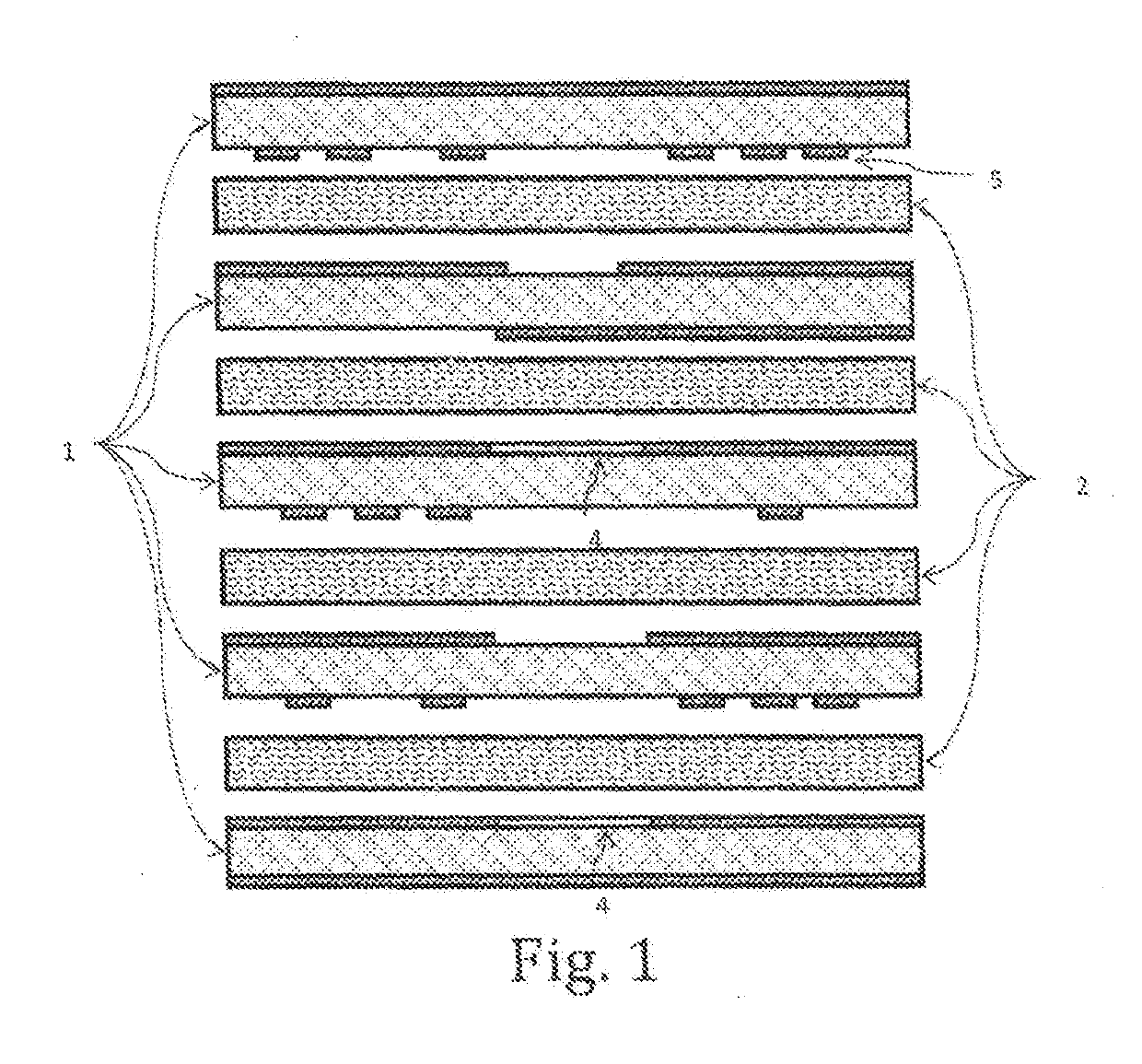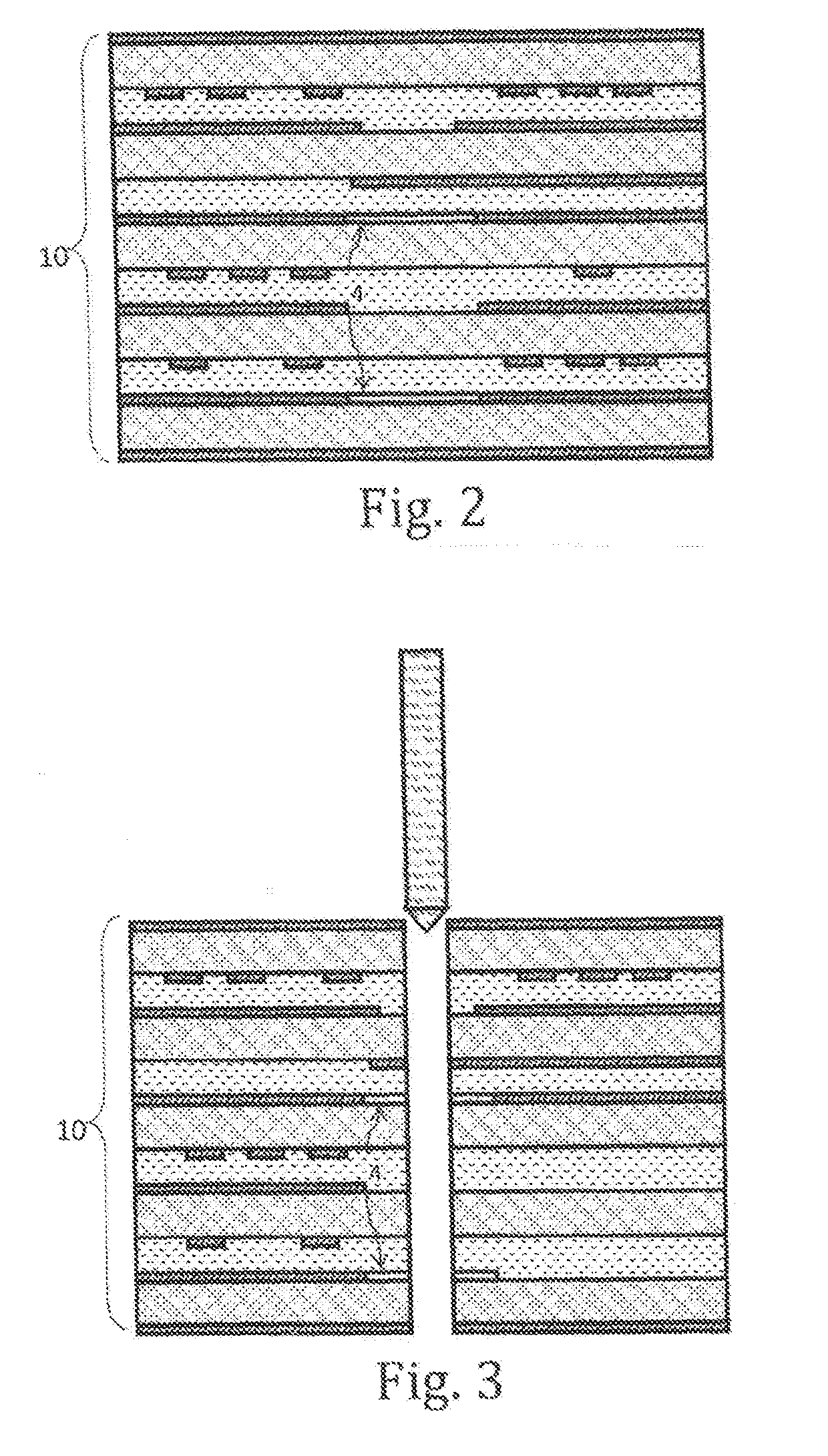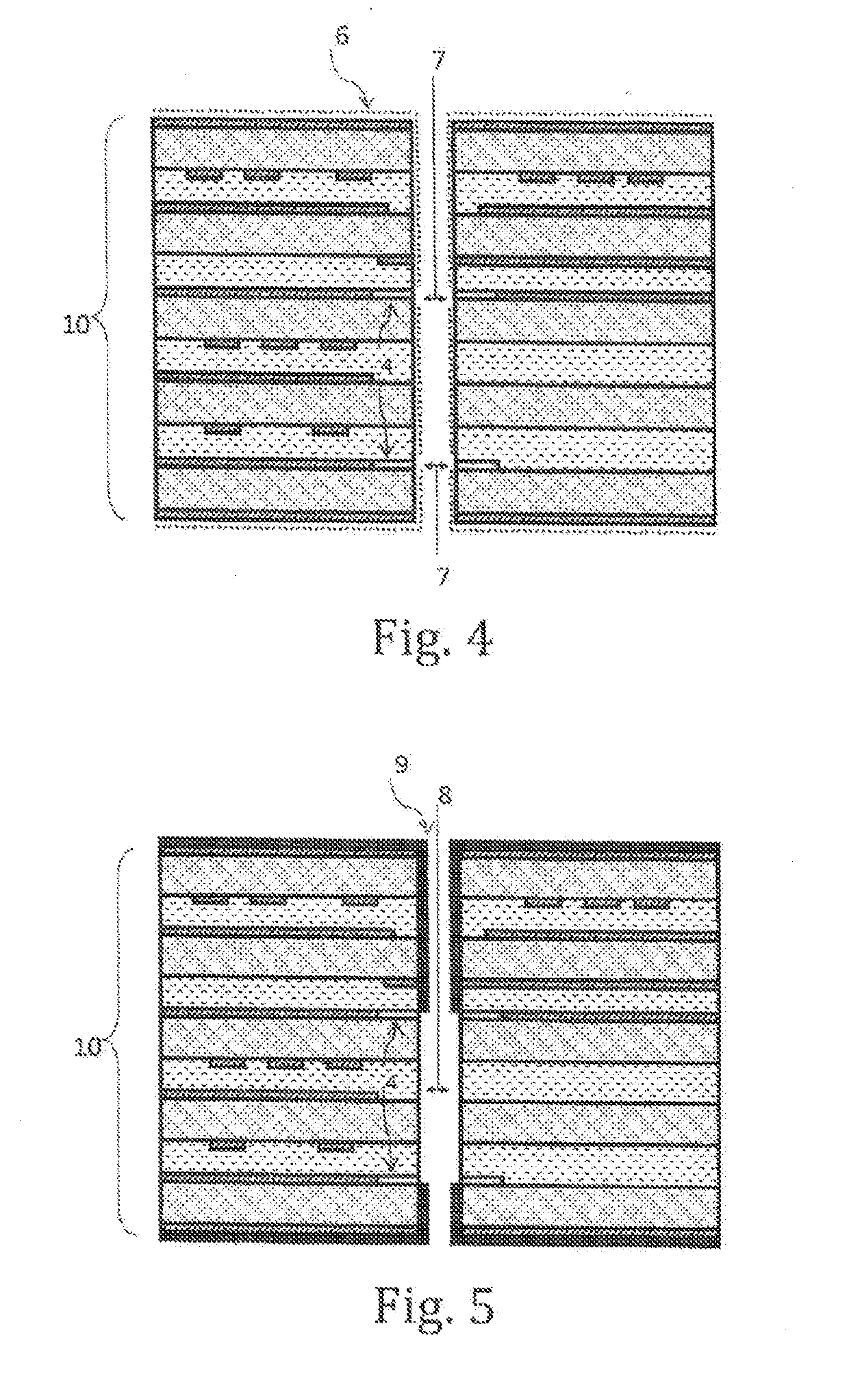Single lamination blind and method for forming the same
- Summary
- Abstract
- Description
- Claims
- Application Information
AI Technical Summary
Benefits of technology
Problems solved by technology
Method used
Image
Examples
Embodiment Construction
[0015]Referring now to FIGS. 1-9 of the drawings, FIG. 1 illustrates a common construction of a PCB before the individual layers are pressed together. A typical PCB is formed of multiple layers copper, copper clad core (1) and a partially cured dielectric also known as pre-preg (2). A seed-resist material (4) is deposited on two layers. FIG. 1 shows a common construction of a PCB before the individual layers have been pressed together. A typical PCB is made up of multiple layers of copper, copper clad core (1), and partially cured dielectric also known as pre-preg (2). Deposited on two layers is the seed-resist (4).
[0016]FIG. 2 shows the components in FIG. 1 after they have been laminated to form the PCB (10) or printed circuit board (10). FIG. 2 shows the components in FIG. 1 after they have been laminated. This forms the PCB (10) or circuit board.
[0017]FIG. 3 illustrates the drilling process for vias (9) formed in the PCB (10).
[0018]FIG. 4 shows deposition of a conductive layer us...
PUM
 Login to View More
Login to View More Abstract
Description
Claims
Application Information
 Login to View More
Login to View More - R&D
- Intellectual Property
- Life Sciences
- Materials
- Tech Scout
- Unparalleled Data Quality
- Higher Quality Content
- 60% Fewer Hallucinations
Browse by: Latest US Patents, China's latest patents, Technical Efficacy Thesaurus, Application Domain, Technology Topic, Popular Technical Reports.
© 2025 PatSnap. All rights reserved.Legal|Privacy policy|Modern Slavery Act Transparency Statement|Sitemap|About US| Contact US: help@patsnap.com



